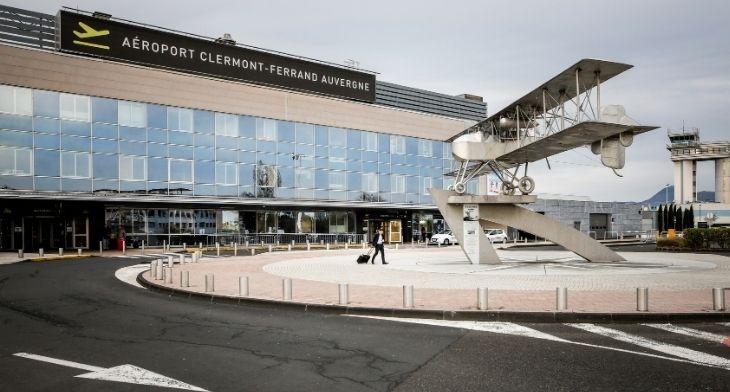Clermont-Ferrand Becomes France’s First Airport to Introduce Sustainable Aviation Fuel
In a significant stride towards greener aviation, Clermont-Ferrand Auvergne Airport has made history as the first airport in France to offer Sustainable Aviation Fuel (SAF). This innovative initiative marks a pivotal moment in the aviation industry’s ongoing efforts to reduce carbon emissions and promote environmental sustainability. As global awareness of climate change grows, Clermont-Ferrand’s commitment to integrating SAF into its operations not only highlights the airport’s dedication to eco-friendly practices but also sets a precedent for other airports across the nation. This bold move comes at a time when the demand for cleaner aviation solutions is more pressing than ever, positioning Clermont-Ferrand as a leader in the regional push for sustainable travel.
Clermont Ferrand Pioneers Sustainable Aviation Fuel in France
In a groundbreaking move for the aviation industry, Clermont Ferrand has become the first airport in France to incorporate Sustainable Aviation Fuel (SAF) into its operations. This initiative marks a significant step towards reducing carbon emissions and enhancing environmental sustainability in the region. The new fuel, which is derived from renewable sources, aims to support the airport’s commitment to minimizing its ecological footprint while ensuring that air travel continues to be efficient and reliable.
The introduction of SAF at Clermont Ferrand comes with several key benefits:
- Environmental Impact: Reduces greenhouse gas emissions by up to 80% compared to traditional jet fuel.
- Boost to Local Economy: Supports jobs in renewable energy sectors.
- Innovation Leadership: Positions Clermont Ferrand as a pioneer in green aviation technology within France.
To illustrate the potential impact of SAF adoption, the following table outlines the advantages of sustainable fuel:
| Aspect | Conventional Fuel | Sustainable Aviation Fuel |
|---|---|---|
| Carbon Emissions | High | Low |
| Source | Fossil Fuels | Renewable Resources |
| Cost | Lower | Higher |
Benefits of SAF Adoption for Local Economies and Environment
The introduction of Sustainable Aviation Fuel (SAF) at Clermont Ferrand Airport marks a significant milestone not only for aviation but for the local community and environment. By embracing SAF, the airport is paving the way for economic growth through the creation of new jobs in the clean energy sector. This shift will generate opportunities in fuel production, distribution, and maintenance, directly benefiting local suppliers and stimulating the economy. Key advantages include:
- Job Creation: Expansion of the green workforce.
- Local Investment: Encourages investment in local infrastructure and facilities.
- Partnerships: Fosters collaborations between governments, businesses, and universities.
Moreover, the adoption of SAF leads to a substantial reduction in carbon emissions, promoting a cleaner atmosphere and contributing to global sustainability efforts. Clermont Ferrand is now at the forefront of environmentally conscious practices within the aviation industry. The benefits extend beyond just reduced emissions; they also encompass enhanced air quality and lower noise pollution for surrounding communities. The impact on the environment can be illustrated as follows:
| Environmental Impact | Before SAF Adoption | After SAF Adoption |
|---|---|---|
| CO2 Emissions | High | Reduced by up to 80% |
| Air Quality | Degraded | Improved |
| Noise Pollution | Elevated | Lowered |
Challenges and Solutions in Implementing SAF at Regional Airports
The transition to Sustainable Aviation Fuel (SAF) at regional airports like Clermont-Ferrand presents a unique set of challenges. Logistical complexities play a significant role, as transporting SAF from production facilities to airports can be both costly and intricate, especially in less busy regions. Additionally, the infrastructure requirements are substantial; existing fueling operations may need significant upgrades to accommodate SAF types and blends. On top of this, customer education—to build awareness and trust in SAF among airlines and passengers alike—is crucial for successful implementation.
In response to these challenges, innovative solutions are being developed. Partnerships between airports, fuel suppliers, and regulatory bodies are forming to streamline supply chains and ensure the effective distribution of SAF. Furthermore, government incentives—including subsidies and grants—are being advocated to help offset costs, making SAF more accessible for regional players. Airports are also investing in modernizing their infrastructures to support the operational needs of SAF, alongside initiatives aimed at enhancing pilot programs for families interested in adopting this greener alternative. These collaborative efforts signal a promising shift toward more sustainable aviation practices at regional airports.
Future Prospects for Sustainable Aviation Across France and Beyond
As Clermont Ferrand sets a precedent as the first French airport to offer Sustainable Aviation Fuel (SAF), it marks a pivotal shift towards eco-friendly air travel not just within the region but potentially across the nation. This innovative step showcases how regional airports can lead the way in reducing carbon emissions and promoting greener aviation practices. With the aviation sector being a significant contributor to climate change, SAF utilization has emerged as a key solution to help mitigate these impacts, offering a reduction of up to 80% in lifecycle carbon emissions compared to traditional jet fuels. Key benefits include:
- Enhanced Sustainability: Utilizing biofuels derived from sustainable sources reduces reliance on fossil fuels.
- Regulatory Alignment: French airports are aligning with EU directives aimed at achieving carbon neutrality by 2050.
- Regional Economic Boost: Investment in SAF infrastructure can create jobs and stimulate local economies.
As other airports watch closely, the groundwork laid by Clermont Ferrand could catalyze widespread adoption of SAF across France and even beyond. The adoption of such practices isn’t merely an environmental obligation but a strategic move to attract eco-conscious travelers and airlines. Future developments may lead to partnerships between airports and fuel producers focusing on the development of local SAF supply chains. A collaborative approach among stakeholders can further enhance accessibility to SAF, potentially leading to:
| Future Focus Areas | Projected Impact |
|---|---|
| Research and Development | Improved fuel efficiency and reduced costs |
| Partnerships with Local Producers | Increased supply chain resilience and sustainability |
| Public-Private Collaborations | Funding for infrastructure and innovation |
The Conclusion
In conclusion, Clermont-Ferrand’s groundbreaking initiative to become the first airport in France to offer Sustainable Aviation Fuel (SAF) marks a significant step towards a greener future for aviation. By embracing this innovative fuel option, the airport not only aims to reduce its carbon footprint but also sets a precedent for others in the industry. As global awareness of climate change intensifies, the move embraces the urgent need for sustainable practices in air travel. Stakeholders and travelers alike are encouraged to monitor developments as Clermont-Ferrand paves the way for a more sustainable aviation sector, highlighting the crucial role regional airports can play in the quest for environmental responsibility.




